 W
W.eus is the top-level domain for the Basque language. The abbreviation eus comes from the Basque endonym euskara, meaning "Basque language". Previously to its creation, .eu domain was also used for this purpose, although unofficially.
 W
WAxoa is a typical Basque dish prepared with mashed veal, onions, tomatoes sauté and flavoured with red Espelette pepper.
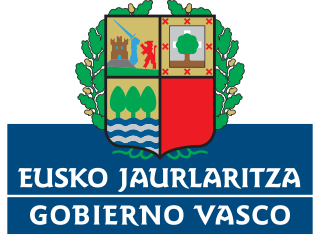 W
WThe Basque Government is the governing body of the Basque Autonomous Community of Spain. The head of the Basque government is known as the Lehendakari. The Lehendakari is appointed by the Basque Parliament every four years, after a regional election. Its headquarters are located in the Lakua district of Vitoria-Gasteiz in Álava.
 W
WZINEBI, also known as the Bilbao International Festival of Documentary and Short Films, is an annual international film festival that has been held in Bilbao since 1959. It is dedicated to documentary, animations and other short film forms.
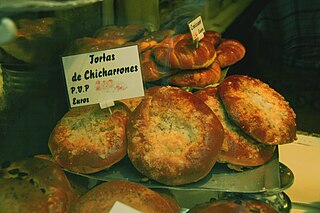 W
WA chanchigorri cake, also spelled txantxigorri or chalchigorri, is a Spanish pastry, common in the cuisine of Navarre. These desserts have a rounded shape. They are traditionally made at the time of pig slaughter, and their main ingredients are fried pork, lard, bread dough and sugar. They are usually served warm and are mainly marketed in the autumn months.
 W
WThe Château du Vigneau is a former winery transformed into a champagne house, located in Bayonne, Pyrénées-Atlantiques, France.
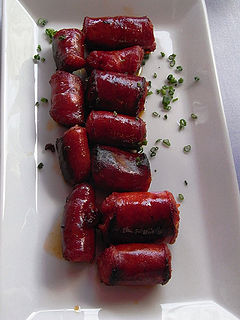 W
WChistorra is a type of fast-cure sausage from Aragon, the Basque Country and Navarre, Spain. It can be considered a special type of chorizo. It is made of minced pork, or a mixture of minced pork and beef, is encased in either lamb tripe or plastic and has a fat content that varies between 70 and 80%. The sausage is flavoured with garlic, salt and paprika, which gives it a bright-red colour. It is usually baked, fried or grilled and often accompanies other dishes, sometimes as part of tapas. The final cured product tends to be thinner than traditional chorizo or sausage, with a diameter of approximately 25 mm. The sausages average 40 cm (16 in) in length, though there are cases when they reach up to 1 m long.
 W
WEuskal Herritarrok was a Basque independentist and socialist political party in the Basque Country. EH was banned in 2003 by the Supreme Court of Spain on the grounds that it sympathized with ETA.
 W
WEuzko Gudarostea was the name of the army commanded by the Basque Government during the Spanish Civil War. It was formed by Basque nationalists, socialists, communists, anarchists and republicans under the direction of lehendakari José Antonio Aguirre and coordinating with the army of the Second Spanish Republic. It fought the troops of Francisco Franco during 1936 and 1937. It surrendered to the Italian Corpo Truppe Volontarie at Santoña, while the rest of the Republican army kept fighting until 1939. This event is called the Santoña Agreement, Pact of Santoña, or Treason of Santoña by some Spanish leftists.
 W
WThe Home office of the Basque Government or the Department of Security, is the department responsible for the security of the Basque Country. This department was created in 1936 and restored in 1980. It is led by the nationalist Estefania Beltran de Heredia.
 W
WThe Human Chain for Basque Self-determination, also called gure ESKU bidea, was a human chain and demonstration held on 8 June 2014 in the Basque Country, claiming the Basque people's right to decide about their political status, eventually as a nation. It linked Durango (Biscay) to Iruñea (Navarre) by a human chain along 123 km. It was called by Gure Esku Dago. About 150,000 persons participated in the human chain, according to the organization's estimates.
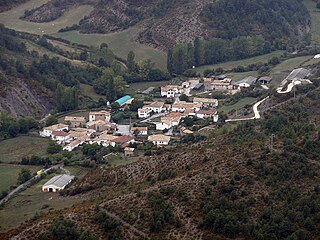 W
WItzalle or Izal is one of the villages that forms the municipality of Galoze in Zaraitzu, Navarre. The village contained 37 inhabitants in 2005.
 W
WIzarra means “star” in Basque, and is a brand of liqueur that was created in 1906 in Hendaye, in the Basque Country, by the botanist and pharmacist Joseph Grattau.
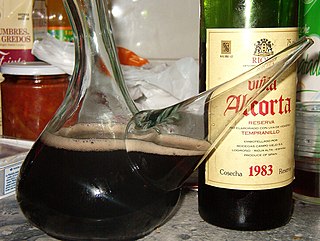 W
WKalimotxo or calimocho is a drink consisting of equal parts red wine and cola-based soft drink. The concoction dates back to the 1920s in Spain, but was relatively uncommon as Coca-Cola was not manufactured in the country at that time. The first Coca-Cola factory opened in Spain in 1953, and the drink was "reborn" and given its current name in 1972. It has since become a classic of the Basque Country region.
 W
WKokotxas is a traditional Basque fish stew. The dish is made from stewed fish necks/dewlap served with a white wine, garlic, flour, and olive oil sauce. In Basque Country the dish is served with a green sauce made from olive oil, flour, garlic, and parsley.
 W
WLehendakaritza or the President's Office is the department of the Basque Government responsible for the affairs of the lehendakari and issues like communication, open government, foreign affairs and peace. This department is led by the President.
 W
W(est. 2011) is a digital library of publications related to the Basque. It includes items from Ondarenet and from contributing institutions such as the Arabako Foru Aldundia, Basque Parliament, and Sancho el Sabio Foundation. The Basque Government oversees the project.
 W
WPagoeta Nature Reserve is located near the town of Aia in the Basque Province of Gipuzkoa, Spain.
 W
WRoncal is a hard, creamy sheep milk cheese. It is made in one of seven villages in the Valle de Roncal of Spain. Roncal enjoys PDO status.
 W
WSt. Martin's Church is a Roman Catholic parish church in Ahetze, Pyrénées-Atlantiques, France. It is dedicated to Saint Martin of Tours. It was registered as an official Historical Monument on June 5, 1973.
 W
WThe Suburates were a pre-Roman tribe of the Aquitani, settled in what today is the historical territory of Soule, in the Northern Basque Country. From their name come the French and Occitan name for the region, Soule, and the Basque names Xiberoa and Zuberoa. The Suburates spoke a form or dialect of the Aquitanian language, a precursor of the Basque language.
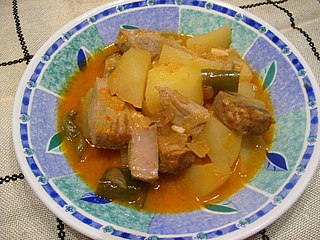 W
WTuna pot, marmitako in Basque Country and marmita, marmite or sorropotún in Cantabria is a fish stew that was eaten on tuna fishing boats in the Cantabrian Sea. Today it is a simple dish with tuna, potatoes, onions, peppers, and tomatoes.
 W
WThe Villano de Las Encartaciones is a Spanish working dog from the region of Las Encartaciones in the province of Biscay, in the Basque country, and to some extent in Álava, in eastern Cantabria and in northern Burgos. The traditional use of the dogs is in management of the Monchina breed of cattle of Cantabria and the Paìs Vasco, and particularly to assist with bringing the cattle down from the mountain pastures between October and December. The association between the dog breed and the cattle breed is so close that it has been said that "one breed could not exist without the other". In 2009 there were fewer than 200 dogs registered in the studbook.